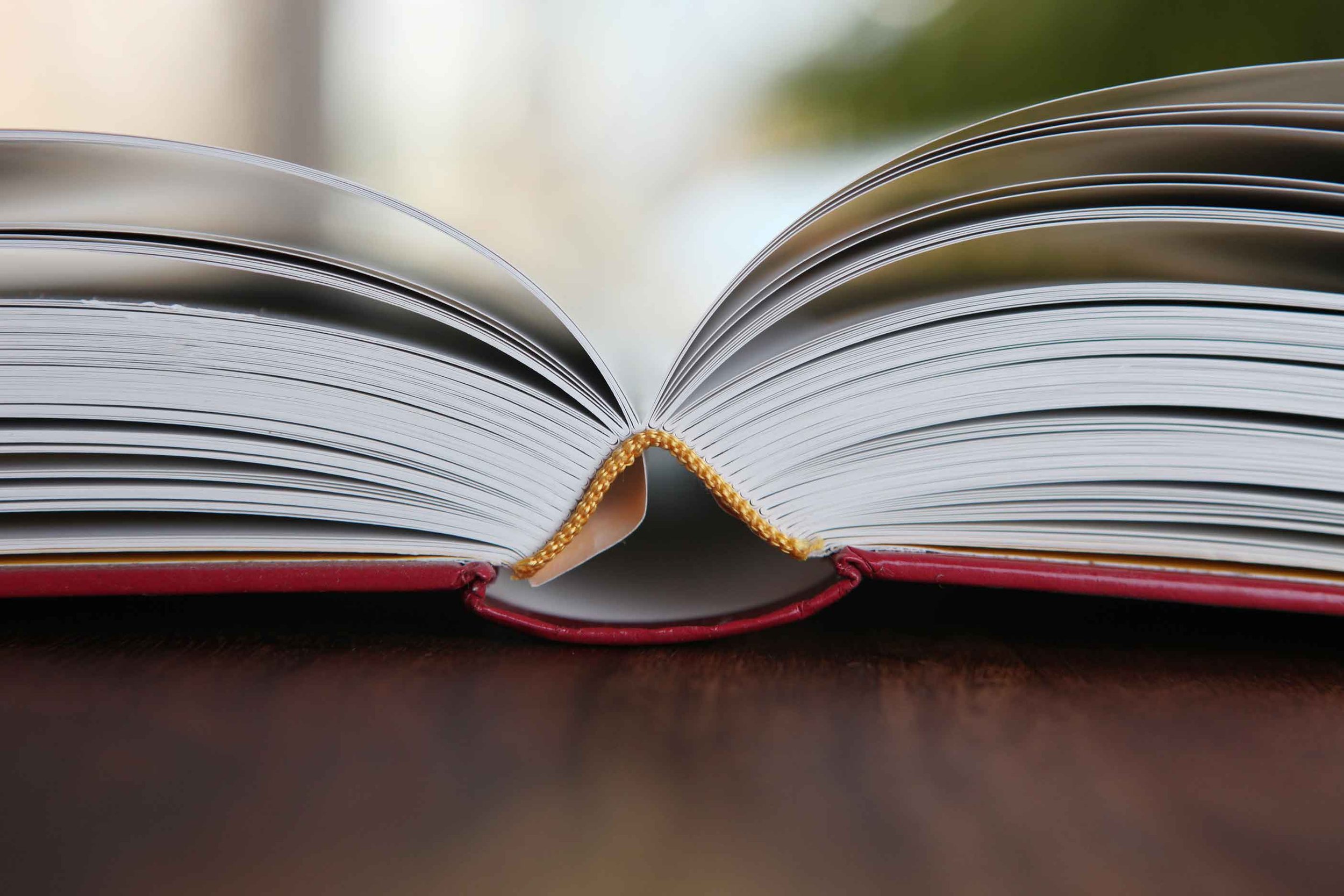
Cover Diagrams:
Hardcover Diagram – Sewn
In case binding, the pages of the book are sewn together and then attached to a hardcover, which is made of stiff cardboard covered in cloth or paper. This method is often used for high-quality books, as it creates a durable and attractive binding. Sign in or create an account now to download an interactive PDF version of this Hardcover – Sewn diagram.
Overview & Layout
1-2-3 Cover Setup (Using InDesign)
Create a new document in Indesign. As you see above.
This cover setup example is based on a 6" x 9" cover with 120 pages of 60# white offset paper. Spine depth calculated by the moffet case bound cover diagram.
A The overall width of your book including the front and back cover, spine, hinge and wrap. In this example, .75" + 5.625" +.625" + .330" + .625" + .5625" + .75" = 14.33".
B This should ALWAYS be just 1 page UNLESS you have an inside printed cover, then change to 2 pages. See top of page for additional guidance.
C Changing value to two columns effectively sets up your front and back cover area.
D Column gutter is the same as the spine depth as determined by the cover diagram.
E The margins will mark the wrap area. Keep all critical type, logos, graphics, barcode etc. a minimum of 1/8" inside these margins. Note that margins will not mark on either side of spine, just outer edges. If you want a consistent margin around all four sides of your front and back cover, pull out guides from the rulers.
F Standard bleed is .125". If your cover has a background color or image you want to extend to the very edge of your book, you must extend past the trim line to the bleed. Slight paper shifting is common in printers, so this ensures full coverage even if there is shifting.
Here is an example of best practices when designing a cover for your book.
Note: if the maximum spine is under .1063 inches use Hardcover Diagram PUR Glued.
Sign in or create an account now to download an interactive PDF version of this Hardcover (Sewn) diagram.
